A well thought out salad doesn’t have to be boring or feel restrictive! Let’s go beyond the basics and discuss how to transform your salads into protein and fiber-packed meals – designed to keep you full for longer with numerous other health benefits. Plus, I’ve listed some recipe ideas that really pack a nutritional punch.
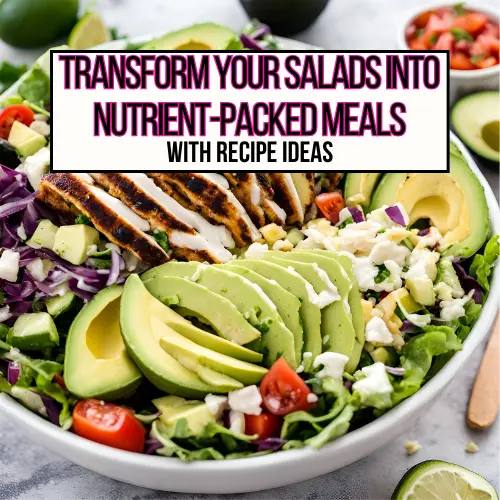
Some benefits of a supercharged salad:
It’s all about what you can add to your salad to make it a more well-rounded and delicious meal that will leave you feeling satisfied.
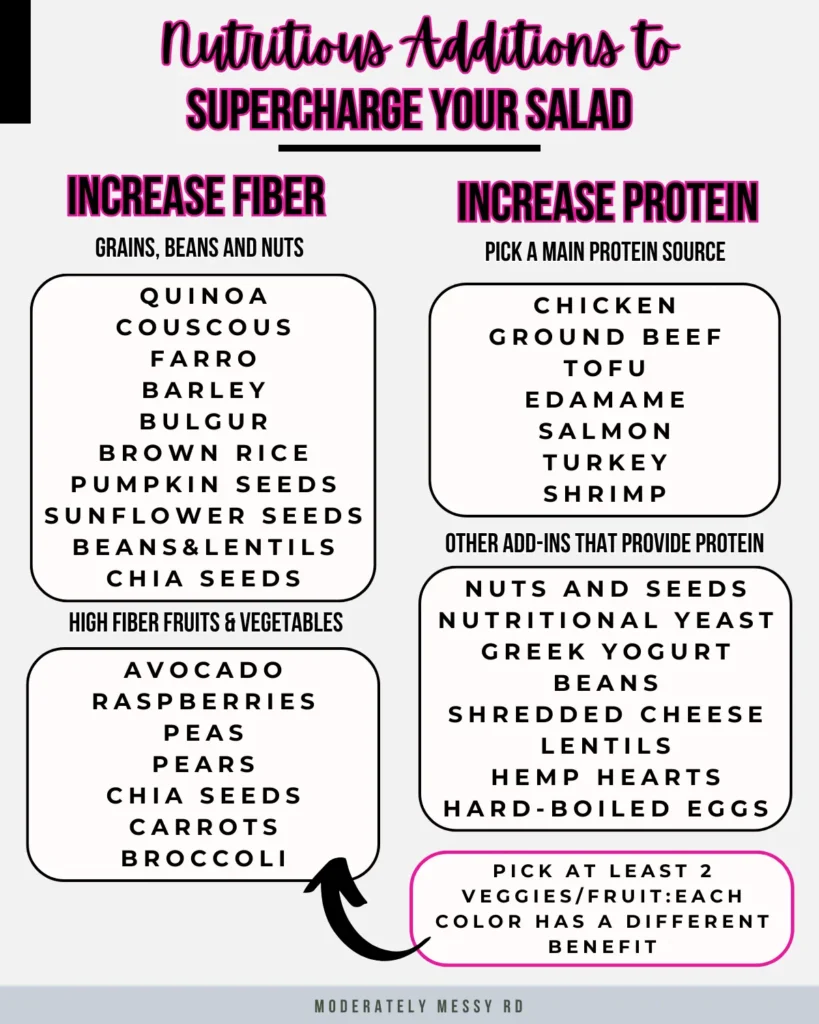
Step 1: Choose your Fruits and Veggies
Start with Greens as Your Base
The base of your salad sets the tone for its nutritional value. Instead of sticking to just iceberg lettuce, mix things up with a variety of greens:
- Spinach: Rich in iron, magnesium, and vitamins A and C.
- Kale: Packed with antioxidants and fiber.
- Arugula: Adds a peppery flavor and is high in calcium and potassium.
- Romaine: Crunchy and refreshing, it provides vitamin C and folate.
Add At Least 2 More Fruits and/or Vegetables
They say eat the rainbow for a reason! Each color offers a different health benefit. Therefore, if we choose more variety then we are more likely to consume enough antioxidants. Try to incorporate at least two more fruits and/or vegetables to help fill in those nutritional gaps.
The best options will be whatever is in season. Seasonal produce is typically fresher and more nutritious than when consumed out of season.
Step 2: Protein Sources
Meals should contain at least 20 grams of protein (ideally 25-30 grams) to promote satiety, or that feeling of fullness. These days, a higher protein intake of at least 1.2 grams per kilogram is recommended for most physically active individuals. Therefore, ensuring a meal is at least 20 grams of protein will help you reach a higher total protein intake.
Salads are easily customizable with so many high protein options like chicken, fish, ground beef, steak, shrimp, tofu, and edamame. However, here’s the thing: to reach a higher protein intake it doesn’t always mean you have to increase the portion size of these foods.
Think about the salad as a whole and what other add-ins can increase that protein intake! Here are some examples:
Step 3: Aim for Higher Fiber
Despite all of its’ benefits, most people are not consuming near enough fiber on a day-to-day basis. I’m not going to go over all these benefits, but if you’re interested – I have numerous posts about fiber.
A well-balanced salad increases daily fiber intake. Adding chickpeas or black beans are one of the easiest ways to add fiber to a salad.
More fiber add-ins include:
Step 4: Dress it Up
So many options – where to even start? Olive-oil based dressings can reduce chronic inflammation as they are often prioritized on the Mediterranean diet. Just look out for the sugar content and try to choose a dressing lower in sugar.
Incorporating chia seeds or hemp hearts into a salad dressing can really elevate a salad. Tahini-based dressings offer additional vitamins and minerals – as well as healthy fats. Making a Greek yogurt dressing or sauce adds a little protein as well as live, active cultures to improve the composition of your gut microbiome.
Nutrient-Packed Salad Ideas
Here are some delicious, nutrient-packed salad ideas with a few summer options! Read my notes on how to level up these recipes to make them more satisfying.
Mediterranean Chicken, Cucumber and Tomato Salad
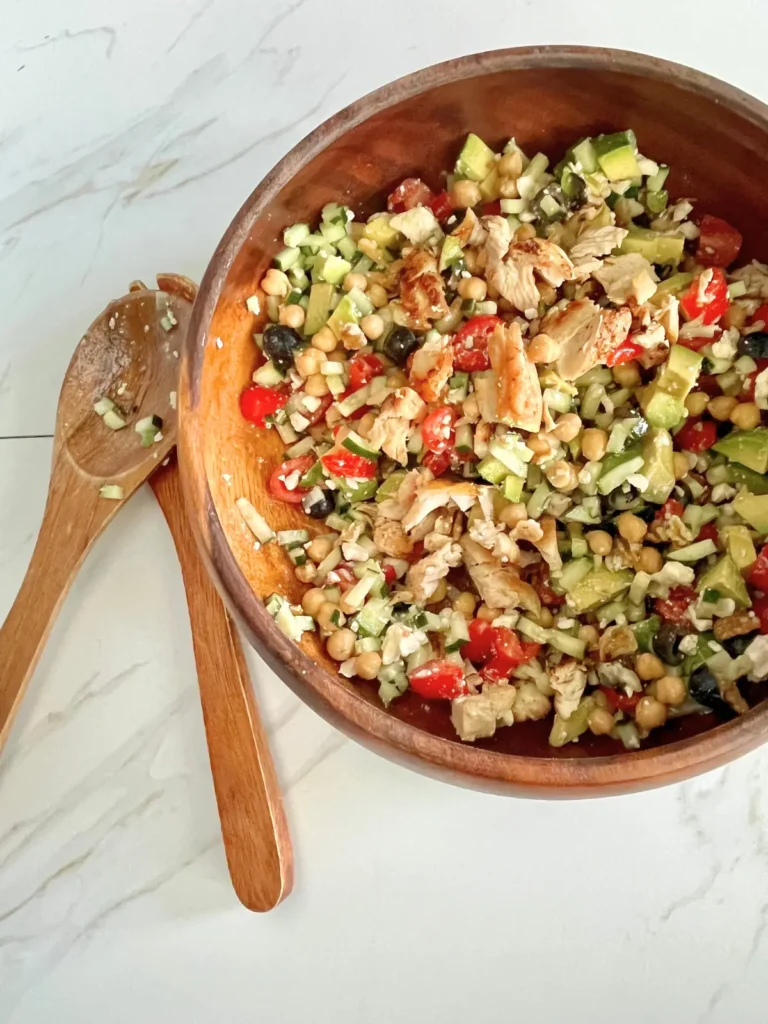
This salad has all the essentials for a Mediterranean diet: lean protein, fiber-packed chickpeas, chopped nuts, avocado, and fresh vegetables. It’s a recipe I turn to time and time again because it’s light and refreshing, yet so healthy and filling! As long as you have some leftover chicken, this salad can be prepared in less than 15-minutes for a quick lunch or easy dinner on a busy weeknight.
Also try:
— Summer Quinoa Salad (two peas & their pod)
— Mediterranean Chickpea Tuna Salad (The Healthy Epicurean)
Spicy Southwest Salad with Spicy Ranch Dressing (The Oregon Dietitian)
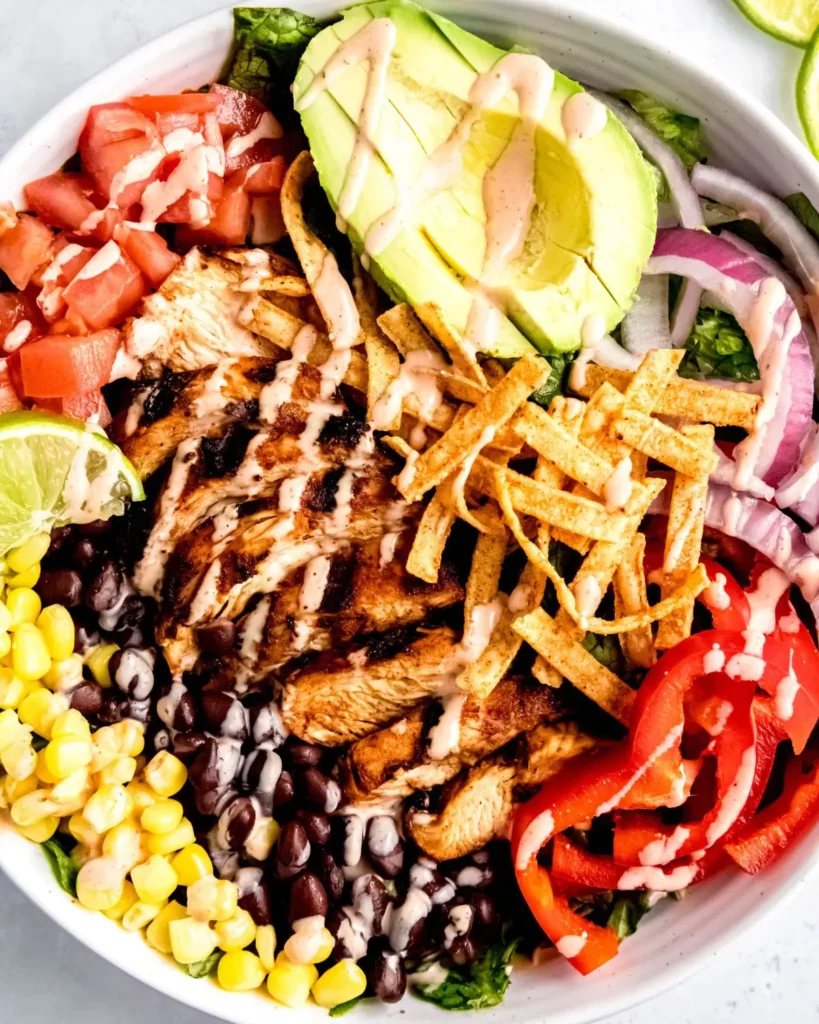
You can’t go wrong with a Mexican-inspired salad as they’re usually packed with flavor and nutritious additions! You’ve got the black beans and avocado, which add a lot of fiber, combined with grilled chicken and a variety of fresh vegetables. Swap the chicken with extra-firm tofu and add a dollop of Greek yogurt for a high protein, plant-based salad.
Peach Salad with Cherries and Goat Cheese (Two Healthy Kitchens)
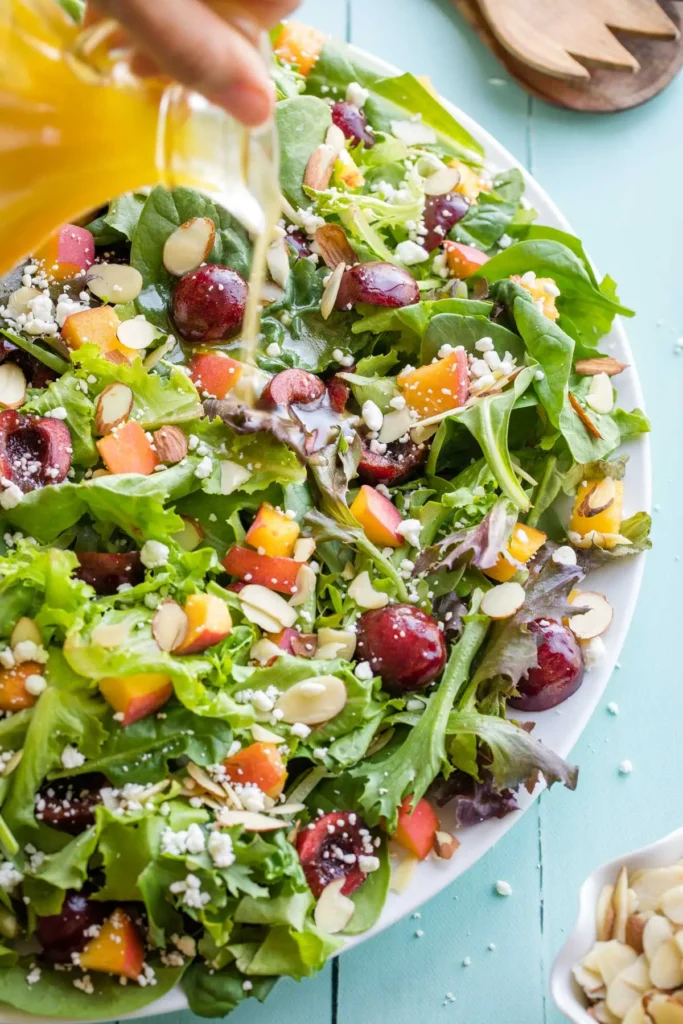
This is a quintessential summer salad with seasonal produce and refreshing, delicious flavors! There are peaches, fresh cherries and sliced almonds. To transform it into a powerhouse meal, top it with some grilled chicken and add a little quinoa or farro to the mix.
Thai Chicken Mango Salad (Haute & Healthy Living)
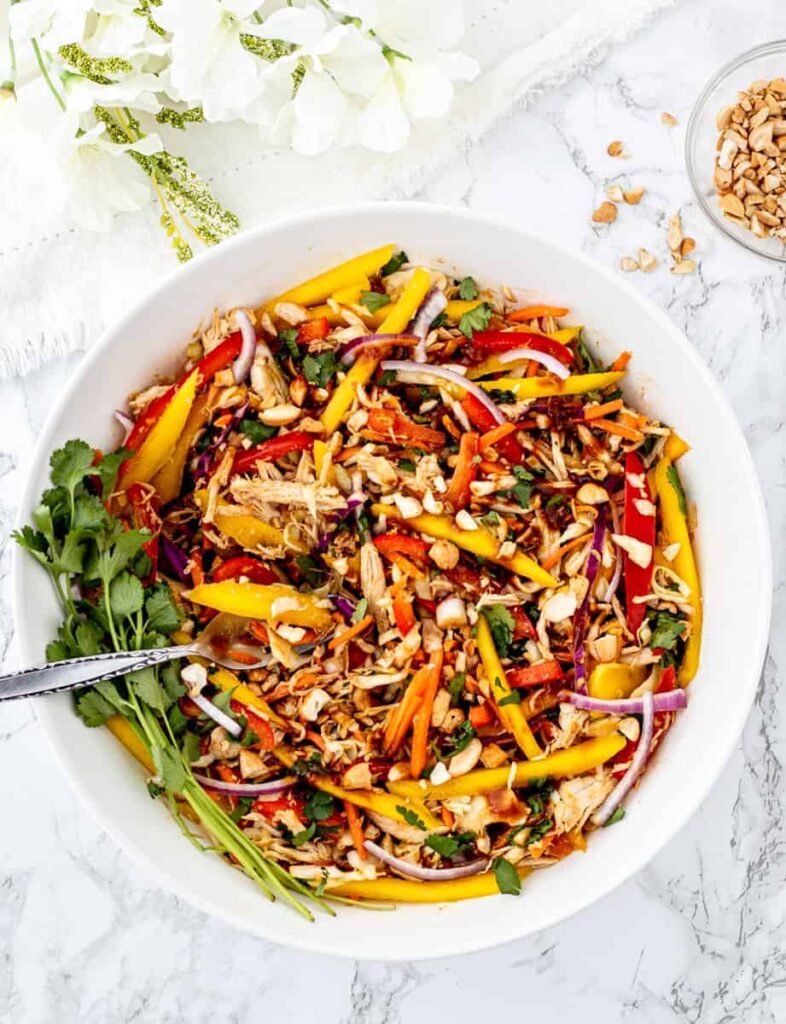
A sweet and savory summer salad made with fresh veggies, shredded chicken, sweet mango, chopped cashews, and a delicious peanut dressing. This is also a quick and easy option – can be done in less than 20 minutes!
Summer Salmon Salad with Grilled Peaches and Chimichurri (Street Smart Nutrition)
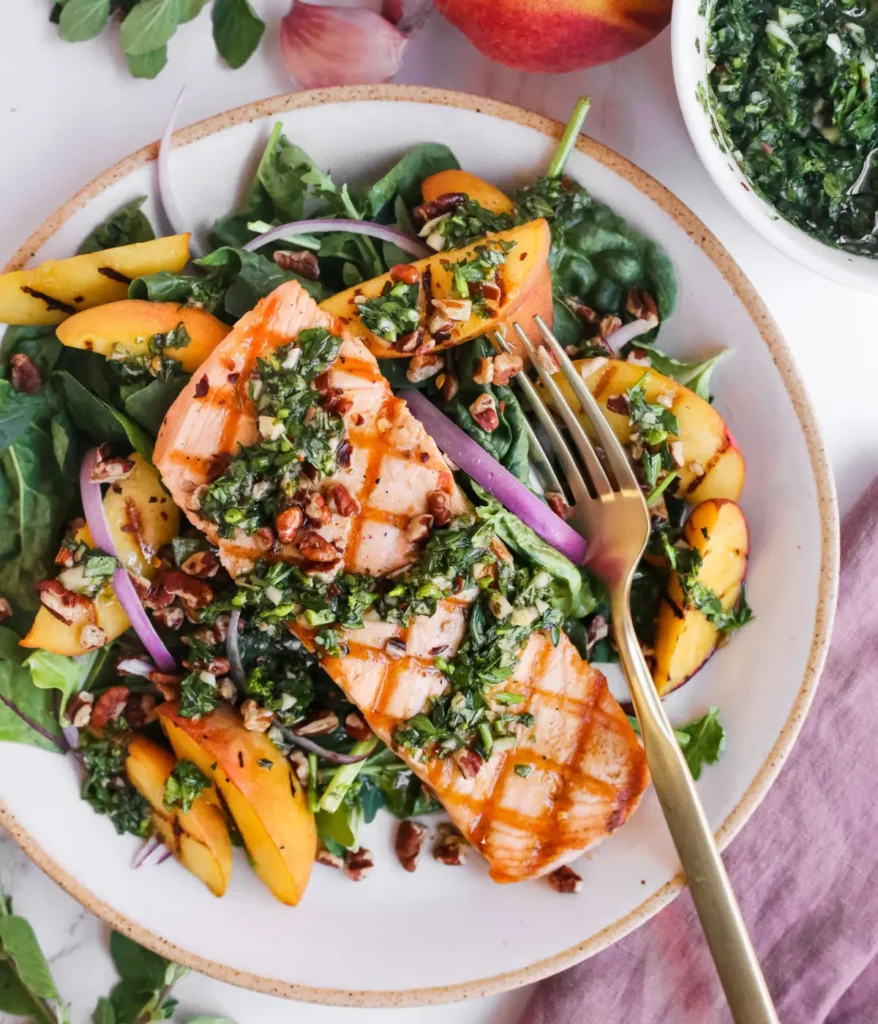
There are not many other superfoods than salmon – one of the BEST sources of EPA/DHA and vitamin D. This recipe features deliciously fresh peaches and chopped pecans. You could sprinkle some chia seeds into the dressing for some added fiber!
Another high protein option:
— Seared Salmon with Lentil Salad (Chatelaine)
Tandoori Turkey Salad with Creamy Curry Dressing (Craving Something Healthy)
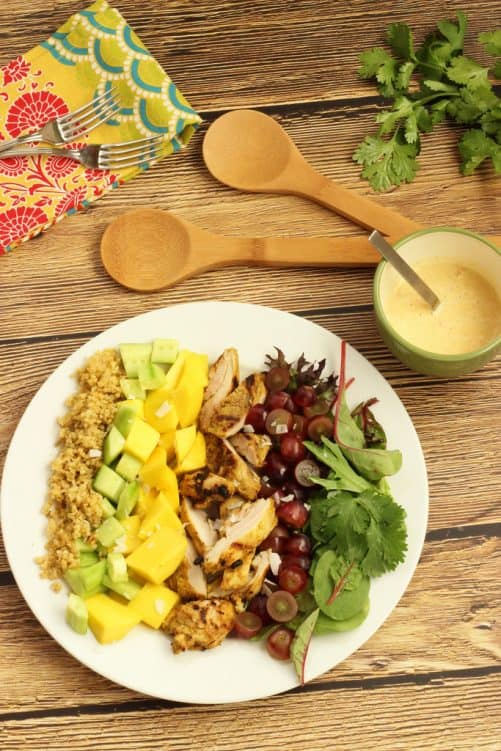
There is a lot going on in this recipe – which makes it the perfect example of an elevated salad packed with protein, fiber and antioxidants. You’ve got mango, grapes, cucumber, turkey, ancient grains and a delicious Greek yogurt dressing.
Avocado Quinoa Power Salad (Free Your Fork)
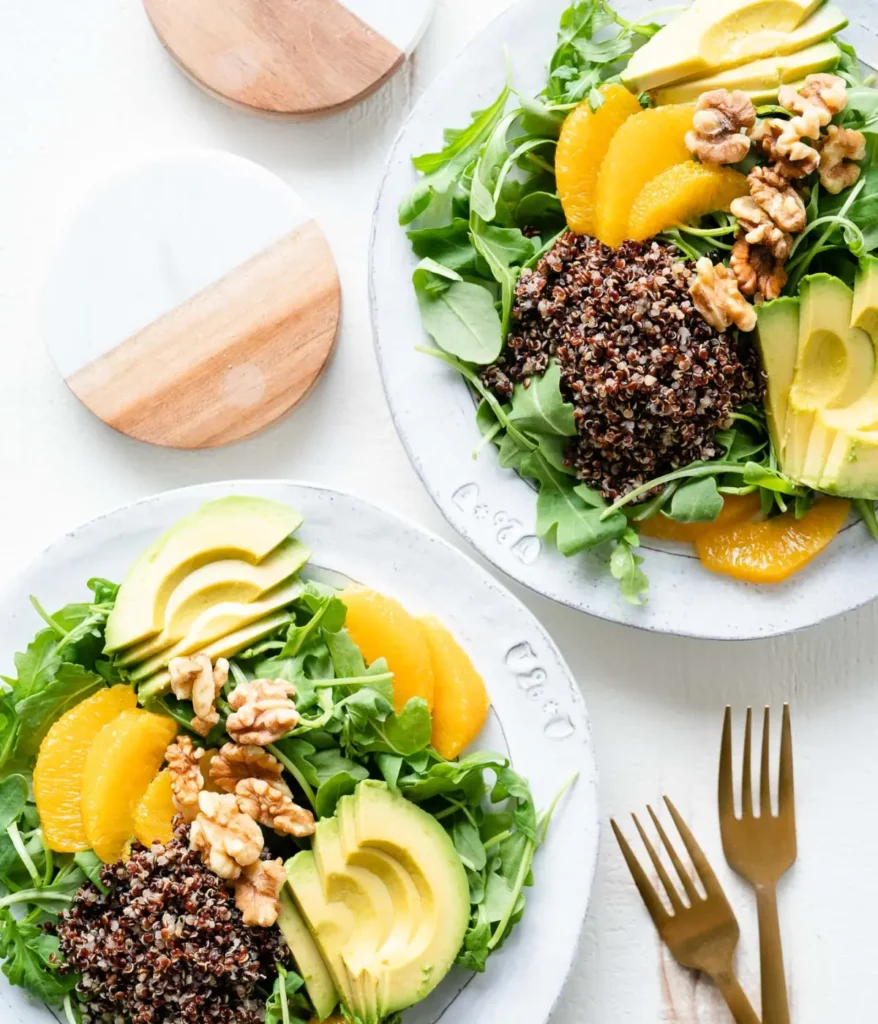
A very healthy, well-balanced salad with arugula, ancient grains, oranges, chopped walnuts, avocado and a fresh basil vinaigrette. Incorporate a lean protein source for more satiety – otherwise, this salad has all the makings of a powerhouse meal.
Vegan Mexican Chopped Salad (Happy Kitchen)
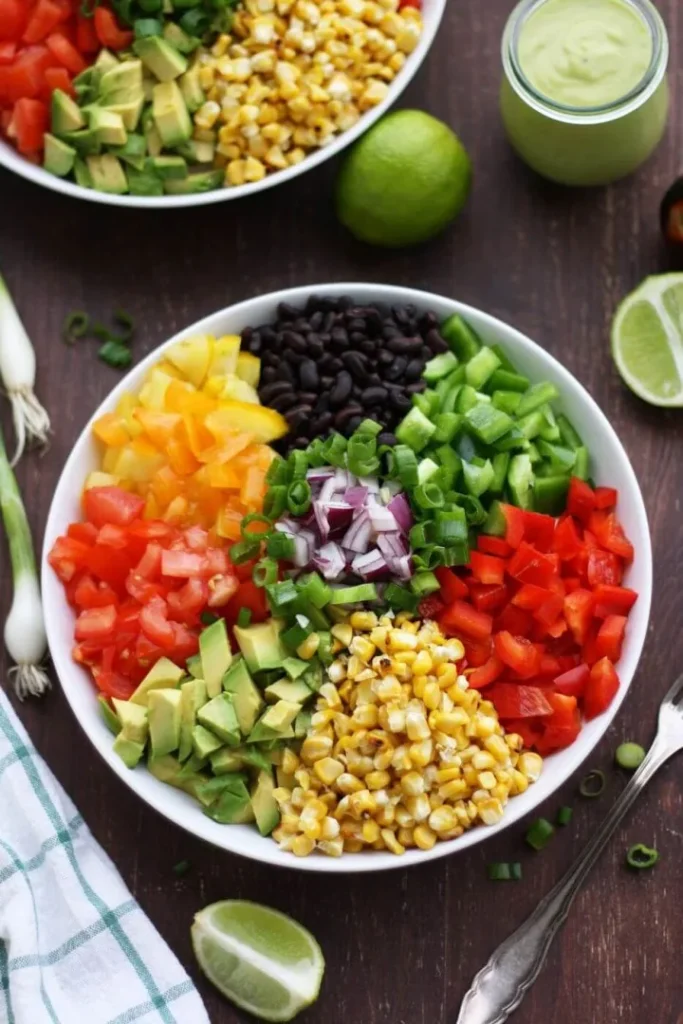
A supercharged plant-based option with black beans, avocado, corn, bell peppers, tomatoes and scallions. Packed with various antioxidants from all the colors of vegetables – like a rainbow! Served with a simple and refreshing avocado and lime dressing!
Another power-packed vegan option:
— Vegan Summer Salad with Maple Lime Dressing (Planted 365)
Pumpkin Quinoa Salad (Joyful Eating Nutrition)
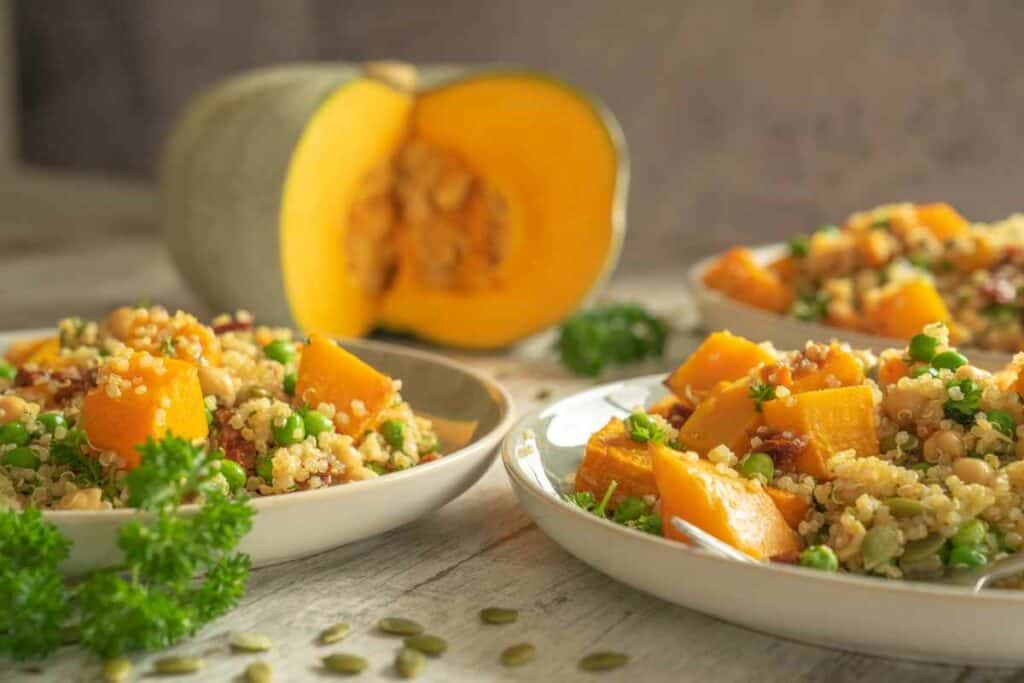
A perfect fall salad with nutritious ingredients like pumpkin, quinoa, peas, and pumpkin seeds! Just add some salmon, beans or chicken for a little more protein and this is an extremely nutritious and well-balanced meal!
Cranberry Chicken Salad (The Healthy Epicurean)
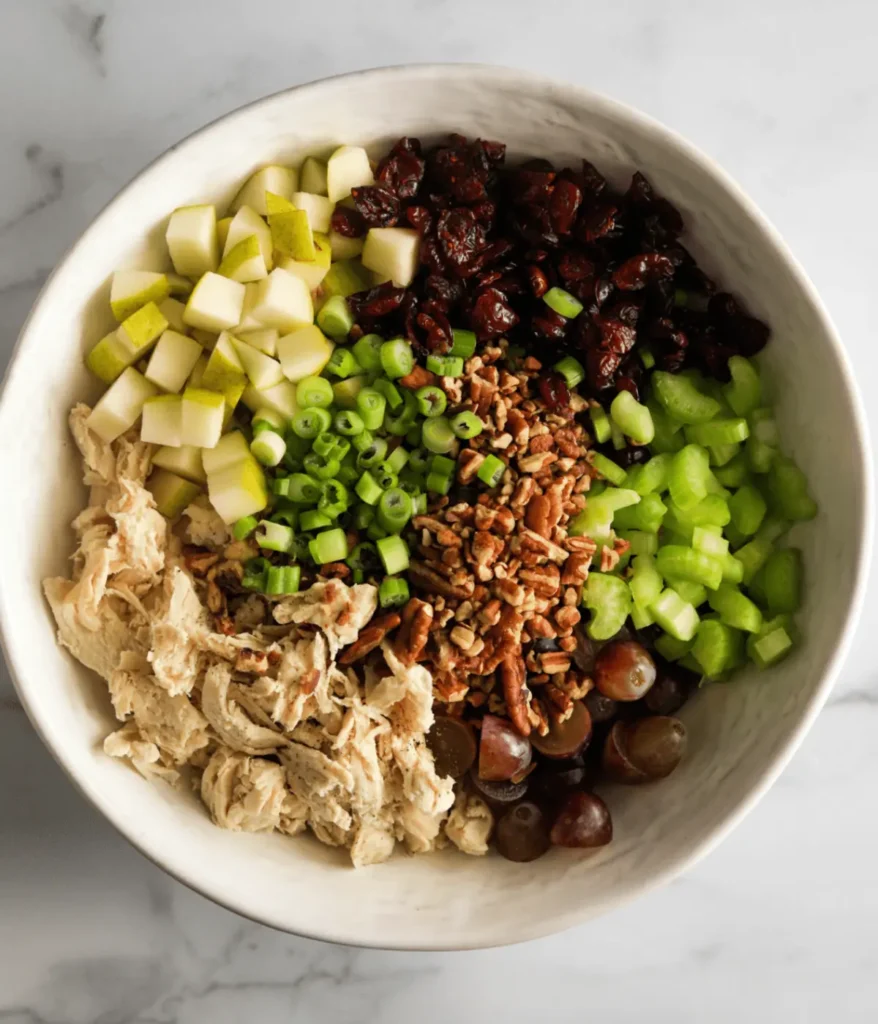
This salad boasts a medley of fresh fruit such as pears, grapes, and dried cranberries along with chicken, celery, pecans and green onion. It’s tossed in a maple balsamic yogurt dressing which adds a lot of flavor and a little bit more protein!
Related Posts:
— How to Throw Together a Protein Bowl (with Recipes)
— The Benefits of a High Fiber, High Protein Diet (with Meal Plan)
Enjoy!
I hope this inspires you to elevate your salads to make them more nutritious, filling, and substantial. Most of the time, it’s just simple pantry staples that you might already have on hand!
What’s your favorite salad additions?
